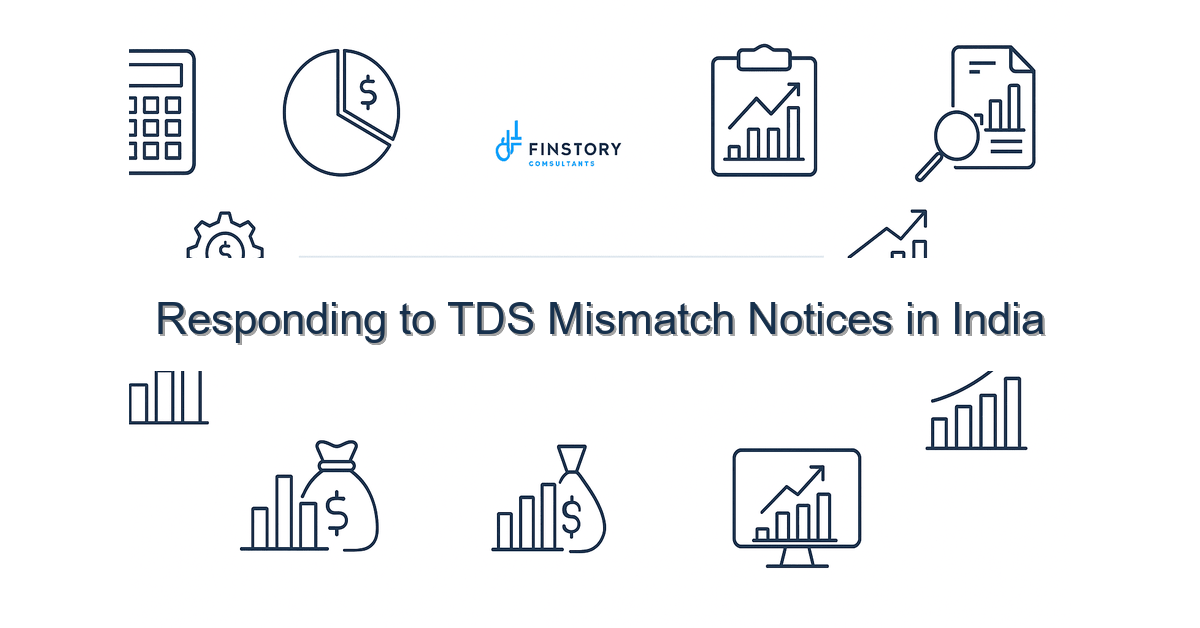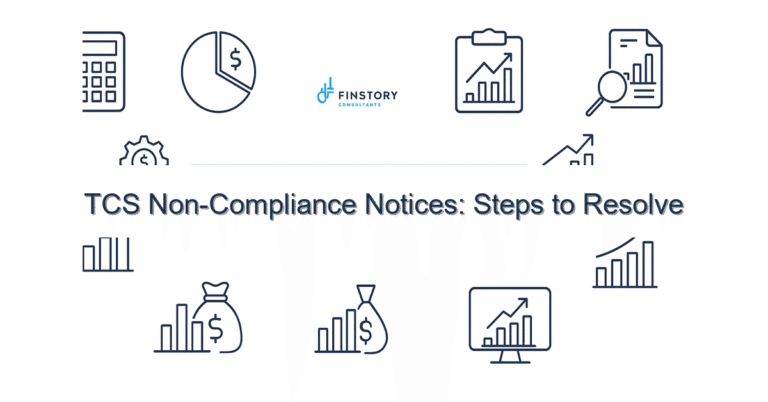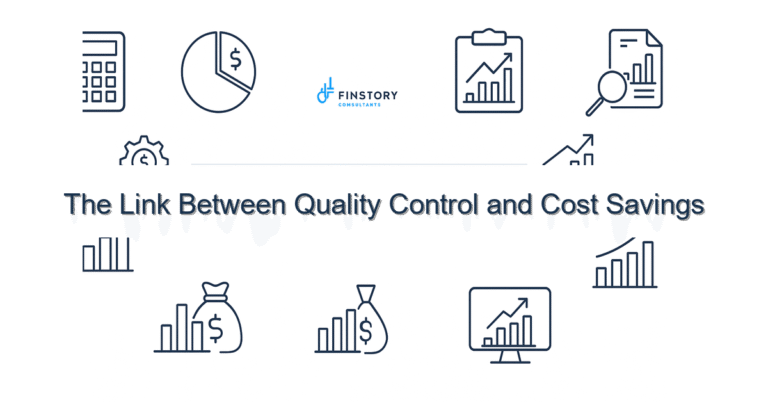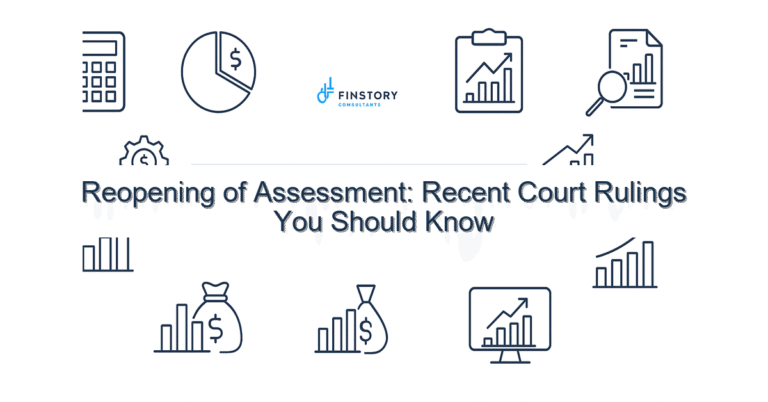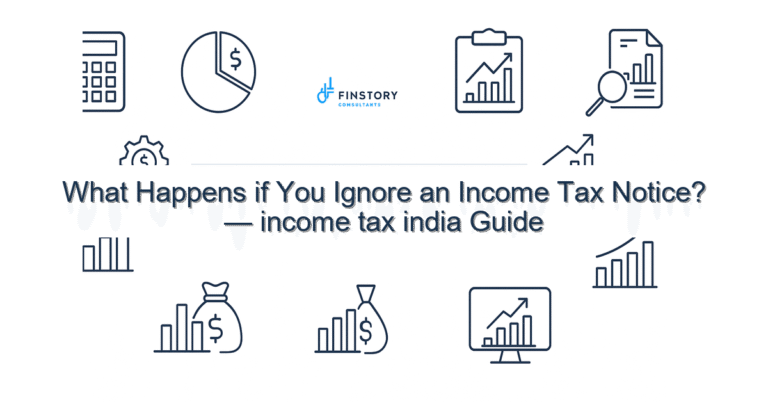Responding to TDS Mismatch Notices in India
Getting a TDS mismatch notice can feel like a small earthquake: sudden, confusing and business-stopping. You’re not alone — salaried employees, professionals, founders and MSMEs face these notices every year when tax credits don’t align.
Summary: A TDS mismatch notice usually means the tax department’s records (AIS/26AS) don’t match your declared income or claimed TDS. Quick reconciliation, correct documentation and a timely response prevent penalties and keep your ITR processing smooth.
What’s the real problem in India?
The core issue is data mismatch. The Central Board of Direct Taxes (CBDT) receives TDS/TCS returns from deductors, but those returns can be late, incorrectly quoted (PAN, TAN), or simply misallocated between Assessment Year (AY) and Previous Year (PY). When AIS/26AS shows different TDS credits than you claim in your ITR, the e-filing portal generates a communication — commonly called a TDS mismatch notice.
- Symptom 1: Your Form 26AS shows lower TDS than Form 16 or bank TDS certificates.
- Symptom 2: Notice mentions different AY/PY or a TAN/BDT error you don’t recognize.
- Symptom 3: You discover duplicate TDS entries or missing entries in AIS/26AS.
- Symptom 4: ITR processing is delayed or refund withheld because of mismatch.
What people get wrong
Many taxpayers assume a notice is a penalty or an audit trigger — it usually isn’t. It’s primarily an administrative discrepancy. Common mistakes include:
- Ignoring AIS/26AS until filing ITR; surprises then cause panic.
- Failing to check PAN/TAN accuracy on salary slips, invoices and TDS certificates.
- Not asking the deductor (employer, bank, client) to re-file or correct TDS returns on time.
- Uploading incorrect supporting docs to the e-filing portal or responding late beyond CBDT timelines.
A better approach
Think reconciliation first, response second. A short, methodical framework avoids fines and preserves refunds.
- Download AIS/26AS for the relevant AY/PY and compare with your Form 16/Form 16A and bank TDS certificates.
- If you spot an error that belongs to a deductor (wrong PAN/TAN, amount, or missing entry), request a correction and re-file from the deductor’s side.
- Prepare a clear response to the e-filing notice: attach reconciled statements, TDS certificates, proof of re-file or intimation from the deductor.
- File a rectification or submit a detailed reply within the e-filing portal as per CBDT timelines; keep copies of communications.
- If needed, escalate to a tax practitioner or consultant for representation and follow-up with the deductor or CPC (Centralised Processing Centre).
Quick example: A Bengaluru startup founder found ₹1.8 lakh of TDS paid by a vendor missing in AIS/26AS. Vendor hadn’t quoted PAN correctly. After the vendor re-filed the TDS return with corrected PAN, the founder’s AIS/26AS updated within 45 days and the notice was closed — refund processed within the next ITR cycle.
Quick implementation checklist
- Check AIS/26AS and Form 16/Form 16A before starting your ITR — don’t wait until the ITR filing last date.
- Confirm PAN/TAN on all TDS certificates and invoices (clients, employers, banks).
- List any mismatches: missing amount, wrong PAN, duplicate entries, or AY/PY mis-allocation.
- Contact the deductor immediately; request correction and re-filing of TDS/TCS returns.
- Download the deductor’s intimation or re-file acknowledgment for your records.
- Prepare a reply to the TDS mismatch notice: include reconciled schedules and proof of re-file.
- Upload the response on the e-filing portal under ‘e-Proceedings’ or reply channel before CBDT deadlines.
- If the deductor doesn’t cooperate, file a rectification request or consult a tax advisor to escalate to CPC/Assessing Officer.
- Keep track of refunds and ITR status after resolution; check AIS/26AS monthly for updates.
- Review your tax-saving strategy (Section 80C limit use, capital gains indexation for investments) to ensure tax credits and declarations align next year.
What success looks like
- Refunds processed within 30–90 days after mismatch resolution.
- Fewer notices year-on-year — measurable reduction in TDS-related communications.
- ITR processing completed without manual intervention or CPC hold-ups.
- Accurate AIS/26AS showing full TDS/TCS credits claimed in returns.
- Reduced risk of penalties and interest due to timely reconciliation and responses.
Risks & how to manage them
Risk: Deductor delays re-filing or refuses correction. Manage by escalating: provide written reminders, show impact on your taxes, and if necessary, file a rectification request with the income tax department and involve a tax consultant.
Risk: Wrong AY/PY allocation — sometimes TDS credited in a different assessment year. Manage by documenting transaction dates and instructing the deductor to mention correct PY when re-filing. Keep communication records for the CBDT timelines.
Risk: PAN mismatches causing permanent rejection. Manage by ensuring PAN is on all invoices and TDS certificates; if PAN changed, provide proof of PAN update and file the supporting documents when replying to the notice.
Tools & data
Use the following routinely:
- AIS/26AS on the e-filing portal — primary source for TDS/TCS credits.
- Income tax e-filing portal — for responding to notices, rectification requests and tracking ITR status.
- TDS/TCS tracking tools and spreadsheet templates to reconcile Form 16, Form 16A and bank certificates.
- Bank statements, Form 26QB/26QC receipts, and deductor re-file acknowledgements as documentary proof.
FAQs
Q: How long does it take for a corrected TDS entry to appear in AIS/26AS?
A: Typically 30–60 days after the deductor re-files the TDS return correctly, but timelines can vary with CPC processing.
Q: Will a TDS mismatch notice cause a penalty?
A: Not automatically. If you respond promptly, provide proof and the discrepancy is administrative, penalties are unlikely. Delays or non-response can attract interest or fines.
Q: What if the deductor says they can’t re-file?
A: Ask for written confirmation and file a rectification request or representation with the IT department. A tax advisor can help escalate or prepare a formal reply.
Q: Can I still claim deductions like Section 80C limit if there’s a TDS mismatch?
A: Yes, but mismatched TDS can delay processing. Ensure proof of contributions (ELSS, PPF receipts) is ready and your AIS/26AS aligns with your declared TDS/TCS and income under the new vs old regime slabs you choose.
Next steps
If you’ve received a TDS mismatch notice: don’t panic, act fast. Start by downloading AIS/26AS, reconcile with your certificates, and reach out to the deductor. If you prefer guidance, our team can prepare the response, liaise with deductors and follow up with CPC so you can focus on running your business or work.
Need help now? Review our resources: [link:ITR guide] and [link:tax-saving tips] or book a consultation.
Work with Finstory. Speak with an Expert for a personalised plan to reduce your tax outgo and stay compliant. Book a free 20-min consultation.
📞 Need help with Income Tax in India?
Book a 20-min consultation with our tax team. Individuals, founders & MSMEs welcome.
Prefer email or phone? Write to info@finstory.net
or call +91 44-45811170.
